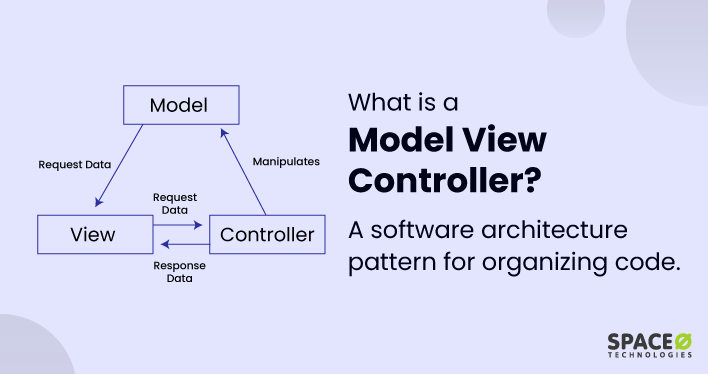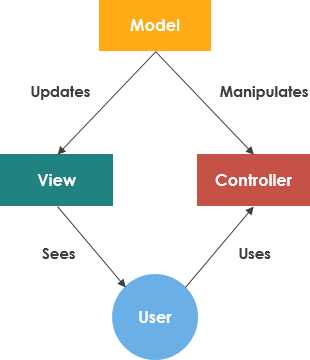Model-View-Controller
(2025-09-30T16:55.337Z)
Perplexity Query
(2025-09-30T16:55
.337Z)
Question:
Write a comprehensive one-page article about "Model-View-Controller".
Model: sonar-pro
Introduction
Model-View-Controller (MVC) is a fundamental architectural design pattern (Programming Paradigms, Software Design Patterns) that revolutionized how developers organize and structure software applications by separating concerns into three distinct, interconnected components.
[4v88gt]
[qu960i]
This pattern, which originated in the 1970s for building graphical user interfaces, has become the backbone of modern web development and Object-Oriented Programming, providing a systematic approach to managing complex applications while promoting code reusability and maintainability.
[ht52r1]

Understanding the Three Components
The MVC pattern divides application logic into three core elements, each with specific responsibilities that work together harmoniously.
[ipztg9]
The Model serves as the data management layer, handling all business logic, data retrieval, manipulation, and validation rules.
[4v88gt]
[qu960i]
For instance, in an e-commerce application, the Product model would manage product-related data including price, description, and stock availability, while performing operations like querying databases or calculating discounts.
[4v88gt]
The View component focuses exclusively on presentation, defining how information from the model is displayed to users through interfaces like HTML templates for web applications or graphical elements for desktop and mobile apps.
[4v88gt]
[qu960i]
This layer remains independent of business logic, simply rendering data in a user-friendly format. In our e-commerce example, the view would be responsible for displaying product lists and details in an organized, visually appealing manner within the browser.
[4v88gt]
The Controller acts as the crucial intermediary, processing user input from the view and coordinating with the model to determine appropriate responses.
[4v88gt]
[qu960i]
When a user adds a product to their shopping cart, the controller processes this action, updates the Cart model accordingly, and returns an updated view showing the modified cart contents.
[4v88gt]
This separation ensures that each component can be developed, tested, and maintained independently while working together seamlessly.
Benefits and Practical Applications
MVC offers significant advantages for development teams, enabling programmers to build components simultaneously without interfering with each other's work while promoting code reusability across different parts of the application.
[ht52r1]
The pattern supports test-driven development by allowing individual components to be tested and troubleshooted independently, making debugging more efficient and reliable.
[ht52r1]
This modular approach proves particularly valuable when building large, complex applications, as it leads to faster development cycles and more maintainable codebases.
[ht52r1]
Real-world applications of MVC span across numerous industries and platforms. Popular web frameworks like Django (Python), Ruby on Rails, Symfony (PHP), and Angular (JavaScript) implement MVC principles to streamline development processes.
[ht52r1]
Mobile applications, desktop software, and even enterprise systems leverage this pattern to maintain clean architecture and facilitate collaboration among development teams.

Current State and Industry Adoption
Today's software development landscape heavily relies on MVC principles, with virtually every major programming language offering robust MVC frameworks.
[ht52r1]
Languages including Java, Python, JavaScript, C#, Swift, Perl, and PHP have established frameworks that implement MVC patterns, making it accessible to developers across different technology stacks.
[ht52r1]
The pattern has evolved beyond traditional web applications to encompass modern Single-Page Applications, mobile app development, and Microservices Architectures.
Major technology companies and startups alike continue to adopt MVC-based frameworks for their scalability and organizational benefits. The pattern's influence extends to related architectural patterns such as MVVM (Model-View-ViewModel), MVP (Model-View-Presenter), and MVW (Model-View-Whatever), demonstrating its foundational importance in software architecture.
[qu960i]
Future Outlook
As software applications become increasingly complex and user expectations continue to rise, MVC's emphasis on separation of concerns and modular design will remain more relevant than ever. The pattern is likely to evolve further, incorporating modern concepts like reactive programming, cloud-native architectures, and artificial intelligence integration while maintaining its core principles of organized, maintainable code structure.

Conclusion
Model-View-Controller stands as a timeless architectural pattern that has successfully adapted to decades of technological evolution, from desktop applications to modern web and mobile development. Its enduring relevance lies in its fundamental approach to organizing complex systems through clear separation of concerns, ensuring that as technology continues to advance, MVC will remain a cornerstone of well-structured software design.
Citations
[4v88gt] 2025, Jul 06.
. Published: 2024-08-21 | Updated: 2025-07-06[qu960i] 2025, Jun 16. MVC - Glossary | MDN - Mozilla. Published: 2025-07-11 | Updated: 2025-06-16
[ipztg9] 2025, Sep 14. Model–view–controller - Wikipedia. Published: 2003-08-05 | Updated: 2025-09-14
[4]: 2025, Sep 29. Model-View-Controller – MC++ BLOG - Modernes C++. Published: 2023-04-17 | Updated: 2025-09-29
[ht52r1] 2025, Sep 29. What is model-view-controller (MVC)? | Definition from TechTarget. Published: 2023-09-12 | Updated: 2025-09-29
[6]: 2025, Sep 30. What is Model-View and Control? - Visual Paradigm. Published: 2025-01-01 | Updated: 2025-09-30
[7]: 2025, Sep 29. MVC Framework Introduction - GeeksforGeeks. Published: 2025-07-23 | Updated: 2025-09-29
[8]: 2025, Sep 29. MVC Architecture Explained: Model, View, Controller - Codecademy. Published: 2025-06-30 | Updated: 2025-09-29